Before we get into the details of the 10 mouthwatering and nutritious Hausa foods in Nigeria, I know what you’re thinking: What is Hausa food? Let me introduce you to this delectable cuisine from West Africa!
Hausa food is rooted in the ancient traditions and cultural heritage of the northern Hausa people who predominantly inhabit northern Nigeria and parts of Niger. This cuisine has been handed down over many generations but continues evolving with modern innovations.
Hausa food is characterized by its delicious spices and hearty stews, making it a flavorful and enjoyable experience. It’s a well-balanced cuisine that offers a large array of ingredients that are packed with nutrition. In this article, I’ll show you the 10 best Hausa dishes you must try if you want something truly delicious and healthy!
Are you looking to explore the rich culture and history of Nigeria? Look no further than Hausa food! This traditional cuisine dates back centuries and is still an important part of Nigeria’s identity today.
Hausa cuisine heavily relies upon grains, meats, fish, dairy, vegetables, and fruits. At its heart are various types of rice, traditionally cooked with vegetables along with the soup of choice.
As for proteins, beef, chicken, goat, and fish are all staples in Hausa cooking.
No matter your dish, spices and herbs like ginger, garlic, and chili pepper will always be present to add some heat. Other ingredients like onions, peppers, and tomatoes often make appearances as well in certain dishes.
Now that you understand why Hausa food is so popular in Nigeria, let’s dive into the top 10 dishes you should try on your next adventure to the region!
Tuwo Shinkafa
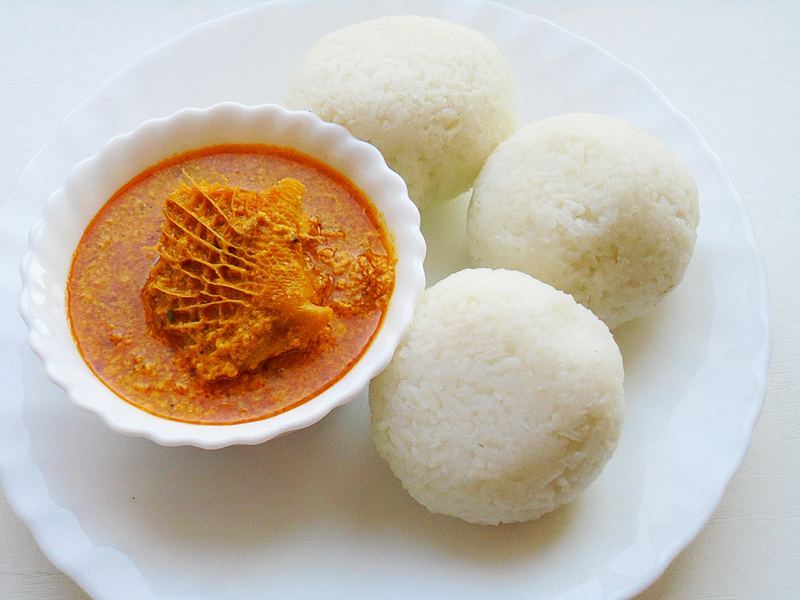
If you’re looking for a particularly interesting and nutritious Hausa food, then Tuwo Shinkafa is perfect! This dish is a thick porridge made from soaked, ground rice, sometimes served with Koko or a sweet sauce.
Making tuwo shinkafa
Making tuwo shinkafa is easier than you may think; you only need to soak ground rice in warm water for several hours until it’s soft and mushy. Once that’s done, add some salt and knead the mixture into balls before steaming it over boiling water until it’s fluffy and cooked.
Eating tuwo shinkafa
Tuwo shinkafa is typically eaten with a stew or a soup; of course, the type of stew varies depending on the region, but you can expect to find delicious combinations such as beef and okra stew alongside this creamy porridge. Tuwo shinkafa also pairs well with boiled eggs or fried fish.
You can also enjoy Tuwo Shinkafa plain, with some sugar and groundnut added for extra flavour. It might not look like much, but there are plenty of hidden benefits to eating this humble Hausa dish; not only does tuwo shinkafa help fill you up quickly, but its high carbohydrate content will keep you feeling full for longer too!
Miyan Kuka
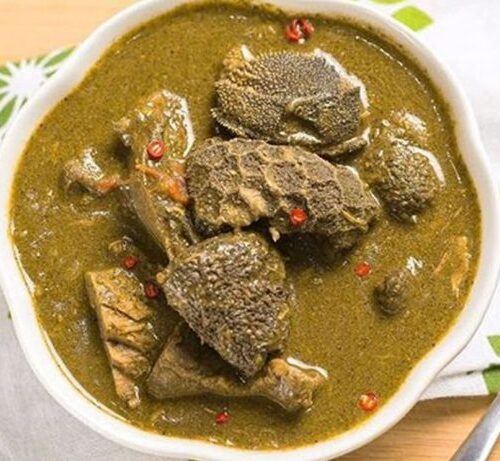
The Miyan Kuka is one of Nigeria’s most popular and nutritious Hausa dishes. It’s made with ground baobab leaves, which are native to the region, and is usually served with a combination of spices, onions, tomatoes, pepper, and vegetable oil. The dish is naturally gluten-free, vegan-friendly, and high in fibre. Plus, it has no food additives or preservatives; it’s all natural!
When making this dish at home, you can either use dried baobab leaves for a milder taste or fresh leaves for a stronger flavour. Then you’ll want to cook the ingredients gradually until thick paste forms. Once that’s done, Miyan kuka is ready to be served with other dishes such as tuwo shinkafa (rice cake) or tuwo masara (cornbread).
Making Miyan kuka is an easy process that can be broken down into just a few steps:
- Gather all the necessary ingredients, such as ground baobab leaves, onions, tomatoes, and spices
- Cook all the ingredients over low heat until they form a thick paste
- Serve hot with your favourite side dish
Try Miyan kuka today to get your daily dose of vitamins and minerals without sacrificing taste!
Miyan Geda (Groundnut Soup)
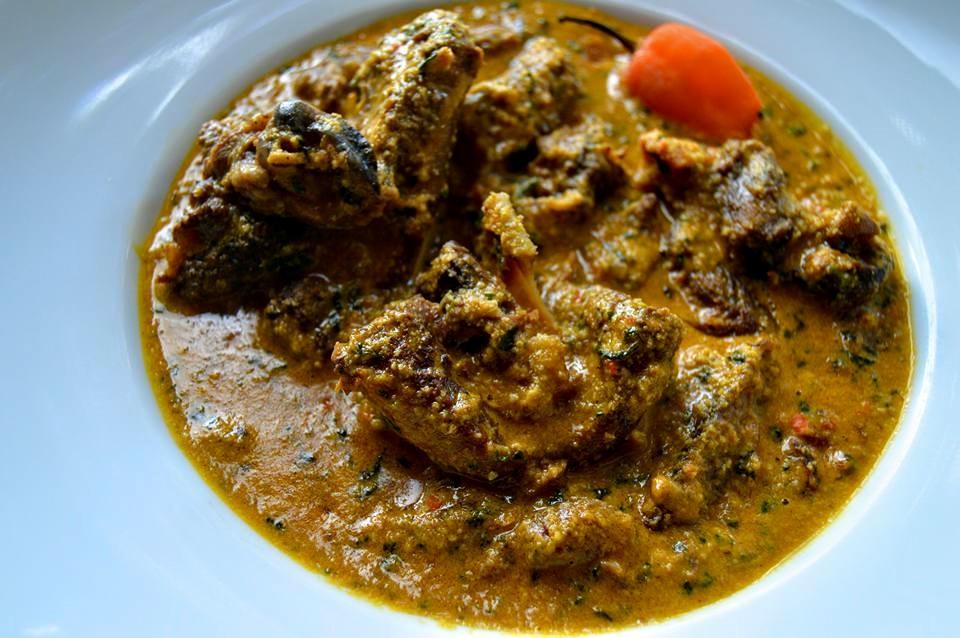
Are you ready to tantalize your taste buds with another amazing Hausa food? Miyan Geda is a nutritious stew made with baobab leaf, nearly identical to the classic Nigerian egusi soup, just without the egusi seeds.
Miyan Geda starts with the classic Hausa soup combination of tomatoes and onion blended into a base of palm oil and water, adding perfectly cooked meat or fish and ground baobab leaf.
How to prepare Miyan Geda
- In a pot, combine the meat, daddawa, garlic, ginger, onion slices, and a dash of salt. Cook the meat until it is soft.
- Add grounded tatashe, palm oil, ground crayfish, and a dash of salt once the meat is tender.
- Add water and dried fish. Bringing to a boil, then simmering for a short time.
- Add the spinach and groundnuts after mixing. Then let it simmer for a few minutes.
- Serve with eba, tuwo shinkafa, fufu, or semo.
Some people add other spices like ground pepper, nutmeg, and aniseed, as well as crayfish powder, for even more intense flavours. And once everything is all cooked up together, you have a delicious stew that’s perfect for dipping your favourite starch into!
The next time you’re looking for something special yet comforting to enjoy, try making Miyan Geda! With its unique blend of ingredients and flavor combinations, this one-of-a-kind stew is sure to make your mealtime memorable and delicious.
Miyan Karkashi
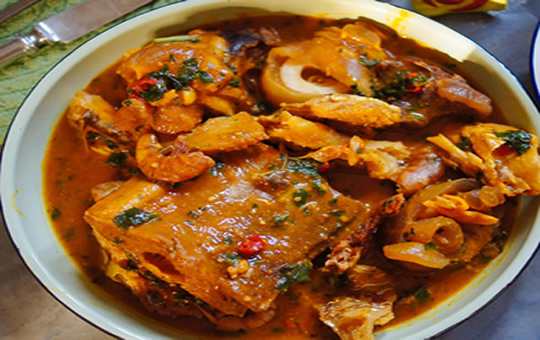
One of the most nutritious and delicious Hausa dishes is Miyan Karkashi. It’s a soup made with vegetables, onions, and peppers, as well as the leaves of the karkashi plant (which gives it its name).
Here’s how to make Miyan Karkashi
- Your karkashi leaves should be mashed or blended into small pieces, and you should set them aside.
- Put a pot with the right amount of water in it, over medium heat, and then add the locust beans (daddawa)
- The meat or fish should be added and cooked for about 25 minutes.
- Add the mixed Karkashi next, along with a small amount of potash, then stir for a few minutes.
- Add your seasoning and spices after reducing the heat.
- The mixture needs to be very smooth, so whisk it for about three minutes.
- To determine whether additional seasoning and/or spices are required, taste the soup with the cooking spoon. If it’s just the right amount, your Miyan Karkashi is ready to be served.
Miyan Karkashi is a hearty and nutritious dish that can be enjoyed any time of day. It’s packed with vitamins, minerals, and dietary fiber and is sure to fill you up! Plus, it’s low in calories, so you don’t have to worry about overindulging in this delicious soup!
Dan Wake
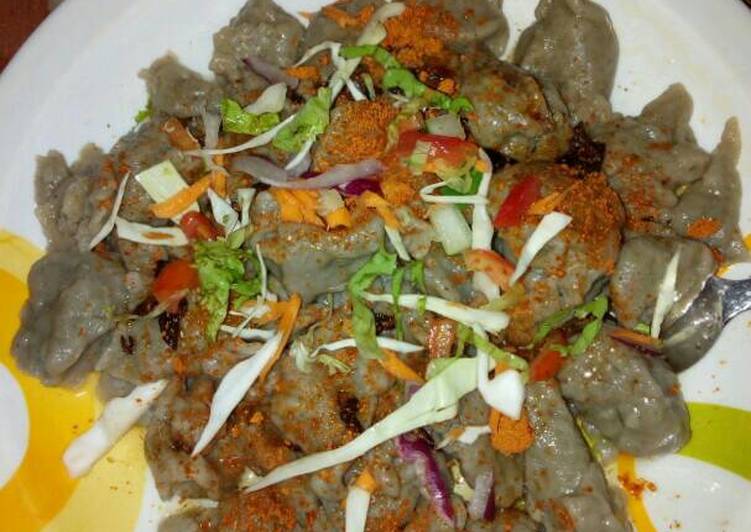
Behold, Dan wake. This popular Hausa dish is a savory staple that is often eaten for breakfast and lunch. It is made with a mixture of flour, sugar, and spices, which is then rolled into small balls and boiled until it forms a dense dough.
The great thing about Dan Wake is that it can be made from scratch in just minutes; all you need is a few staple ingredients like flour and sugar, and you’re good to go! Plus, it’s incredibly nutritious. The combination of flour and sugar provides your body with energy-giving carbohydrates as well as important vitamins and minerals.
So if you’re looking for a quick, easy, and healthy breakfast or lunch option, look no further than Dan Wake! Here are some tips to get you started:
- Use all-purpose flour for the dough; this will give the dish a light texture.
- For extra flavor, add your favorite spices, like cinnamon or paprika, to the dough.
- To make sure the dough holds its shape when boiled, make sure to roll it into small balls before boiling.
- Serve Dan Wake with a side of scrambled eggs or peanut sauce for extra flavor!
Kosai (Bean Cakes)
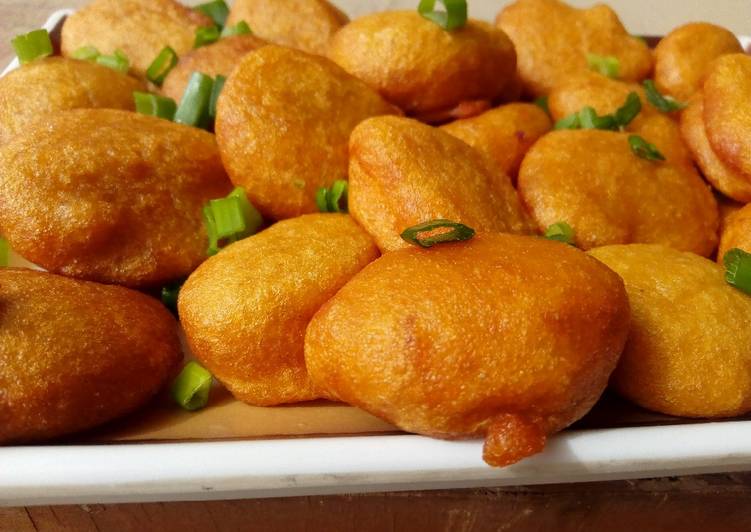
Classic Hausa food kosai simply can’t be missed out! Also known as bean cakes, this Hausa delicacy involves deep-fried dough made from grounded black-eyed beans, onions, and spices. It’s often topped off with a good helping of ground pepper or suya spice and served with some extra pepper sauce or tomato stew. Needless to say, it’s absolutely mouthwatering!
Aside from being tasty, Kosai is pretty nutritious. The black-eyed beans contain protein and calcium, making for a delicious yet healthy meal to enjoy. Plus, if you’re following a vegan diet or looking for something gluten-free, Kosai is the perfect snack for you!
Making Kosai at home isn’t too difficult either since it doesn’t require many ingredients or complicated steps. All you need to do is mix your ingredients together with as little water as necessary until you get a semi-firm dough (not too hard but not too soft either), then deep fry the mixture until golden brown. Once done, all that’s left to do is enjoy your homemade Kosai!
Miyan Taushe
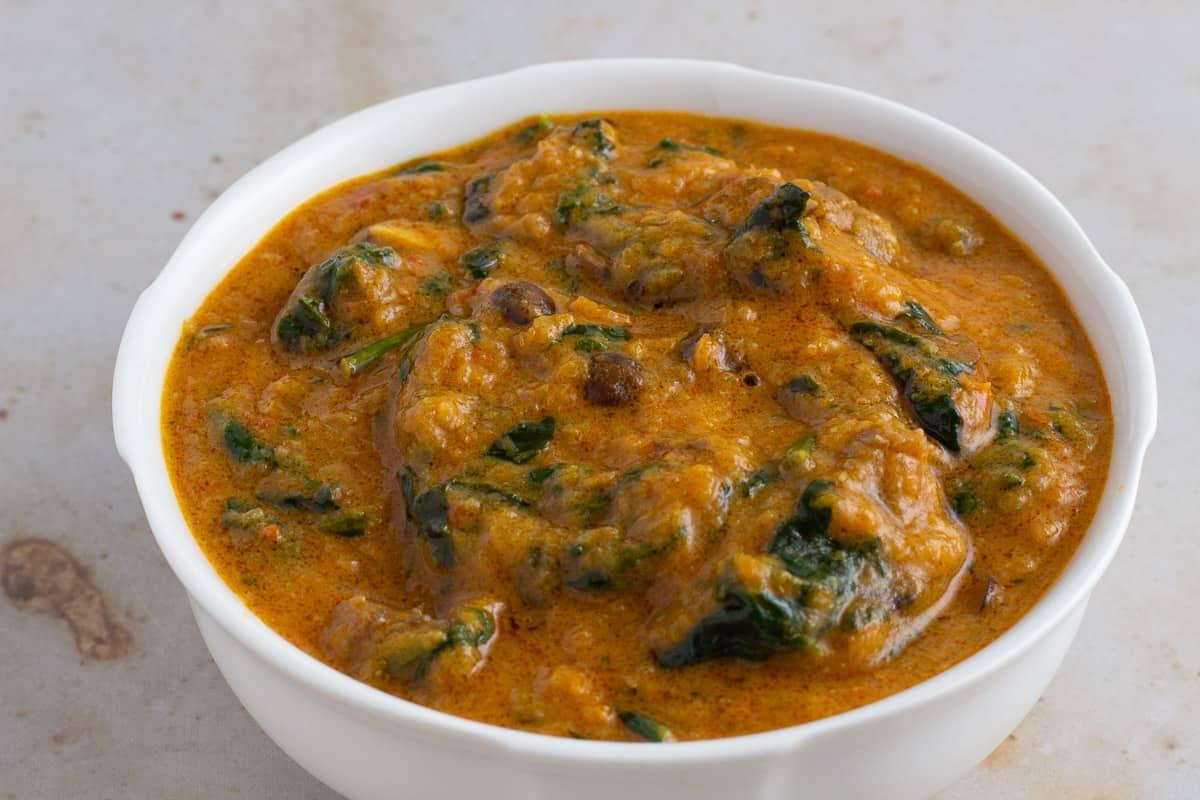
The Miyan Taushe is a Hausa food with a lot of flavour, texture, and, yes, nutrients! It’s typically made with pumpkin, as well as goat meat for protein. Pumpkins are pureed together, then heated with spices and oil before adding the goat meat. Sometimes tomatoes are also added for extra flavour.
This dish is flavorful and comforting; it goes especially well with Tuwo Shinkafa or Masa, two popular Hausa staples. It’s great for entertaining because it can be made in large batches; the leftovers can be frozen for later use.
Miyan Taushe is loaded with vitamins and minerals, including iron, calcium, zinc, and vitamins A, B6, and C. It’s also packed with fiber that helps to keep you fuller longer while helping maintain healthy digestion. All in all, it makes a delicious and nutritious meal that’s sure to please even the pickiest of eaters!
Fura da nono
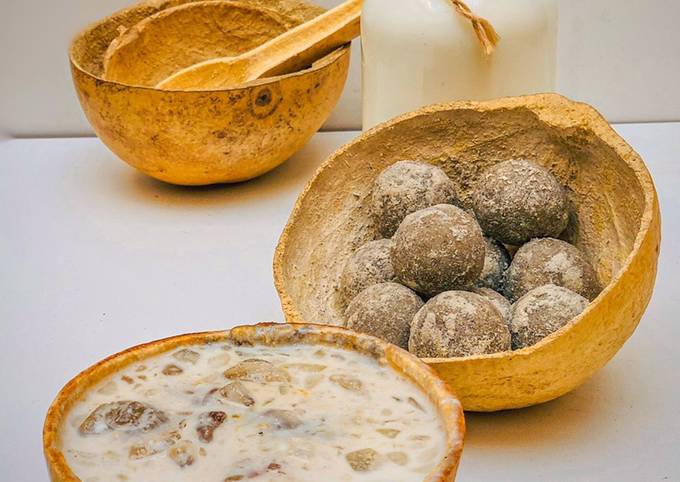
If you’re looking for delicious and nutritious Hausa food, then Fura da nono is definitely one to check out. It’s made from a combination of milk and millet flour, spices like cloves, alligator pepper, and ginger. It’s incredibly flavorful. Plus, it packs a serious nutritional punch.
Fura da nono is high in iron and calcium, which helps keep your bones strong and your energy levels up. It also contains essential amino acids that your body needs for growth and development. The combination of protein from the milk, plus carbohydrates from the millet flour, makes it great as a post-workout recovery snack.
How to Make Fura Da Nono
Making Fura da nono isn’t difficult at all, here’s what you do:
- Start by washing the millet and combine it with 1 cup of water, then add in the spices and puree in a blender until it is smooth (you can also choose to soak the millet in hot water for about 5 minutes before blending)
- Next, pour the pureed millet into a pot, place it on low-medium heat, and stir until a dough forms.
- Add one tablespoon of water to the millet dough, ensure to reduce the heat to a minimum, and let it simmer for another 5 minutes.
- Scoop millet dough into a bowl and set aside to cool
- Add in nono (kafir) and gently mash millet dough. Add sugar to taste. It is best served chilled.
Dambu Nama
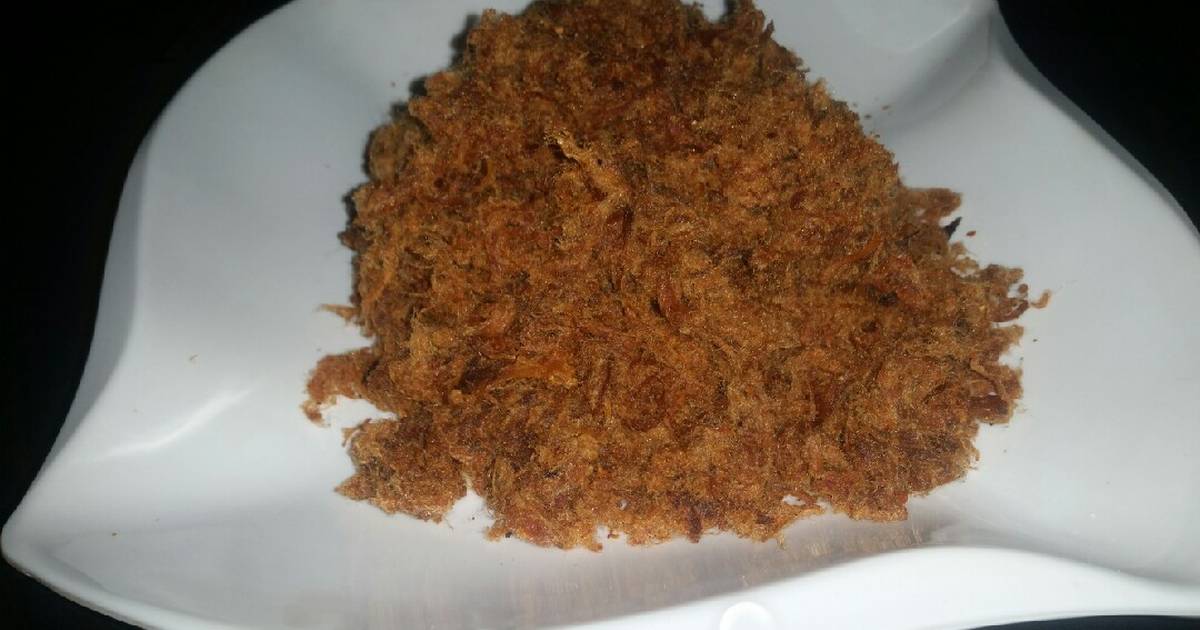
If you’re looking for a nutritious meal with just enough spice, why not try Dambu Nama? This is a type of Hausa food typically served as a stew and drizzled over rice. It’s made of traditional ingredients such as beef, onions, tomatoes, and peanut butter.
What Makes Dambu Nama Great:
- Nutritious: Dambu Nama is packed with protein and vitamins, making it a great meal choice if you’re looking to stay healthy.
- Flavorful: The combination of ingredients creates an amazing flavor profile that will have your taste buds tingling.
- Easy to Make: Making Dambu Nama is relatively easy.
Here’s how to Make Dambu Nama
- Wash the meat and cut it into chunks.
- Put the meat into a pot with 1½ seasoning cubes, chopped onions, crushed garlic, cloves, and ginger powder. Cook with little water until very tender and the meat pulls apart very easily. Also, ensure the water dries out.
- Put meat on a cutting board and shred the meat using two forks to pull it apart in the opposite direction. You can also pound meat in a mortar.
- Transfer to mixing bowl. Add in the suya spice and chili powder. Mix well and set aside.
- Pour oil into a frying pan and put on medium heat. Shallow fry the meat and constantly stir until golden brown and crumbly. Ensure the oil is not too much.
So why not give Dambu Nama a try? It’s an authentic dish full of flavor and nutrition that will be sure to tantalize your taste buds!
Kilishi
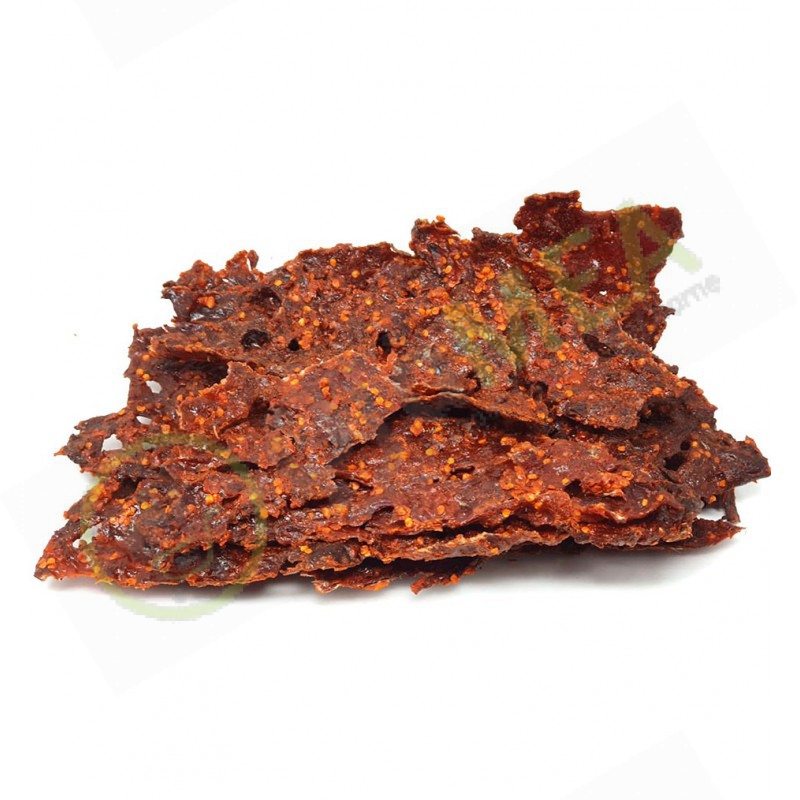
The Kilishi is a Nigerian specialty made with thin slices of meat that have been dried and spiced; it’s considered the Hausa version of jerky. Made with goat, beef, or ram meat, it has a chewy texture and a spicy flavour that comes from blending traditional spices like ginger, cumin, clove, and other seasonings.
Kilishi isn’t just delicious! As it’s made from lean meats stripped of fat, it is a good source of protein and other essential nutrients like iron and zinc. Plus, the spices in its preparation provide extra antioxidants to reduce inflammation. Kilishi can be your go-to for a tasty snack that delivers nutritional benefits!
Frequently Asked Questions
You probably have some questions about Hausa cuisine, so let’s take a look at some of the most frequently asked ones.
What are the staple ingredients in Hausa food?
The staples of Hausa food include sorghum, millet, maize, and rice. Other ingredients used in various dishes vary from region to region and include things like okra, sweet potatoes, beans, and yams. Meat and fish are also used in many dishes.
Is Hausa food spicy?
It depends on the dish! Some are quite spicy, while others are milder. It all depends on the ingredients and seasonings used in each dish.
Is Hausa food healthy?
Yes! Many of the dishes use fresh local ingredients that provide vitamins and minerals to help maintain a healthy diet. Additionally, many recipes are cooked using natural spices that give dishes an extra boost of flavor without adding unhealthy fat or sodium.
Conclusion
In conclusion, Hausa food is both nutritious and delicious! From its variety of soups and stews to its diverse selection of snacks and desserts, you’ll never get bored. The best part is you don’t have to travel to Nigeria to enjoy these mouthwatering dishes; you can find most of the ingredients in your local grocery store and get creative in the kitchen with your own twists on these classic favourites. So why not step into the world of Hausa food and discover a whole new way to enjoy the flavours of Nigeria.
Photo credit: Google

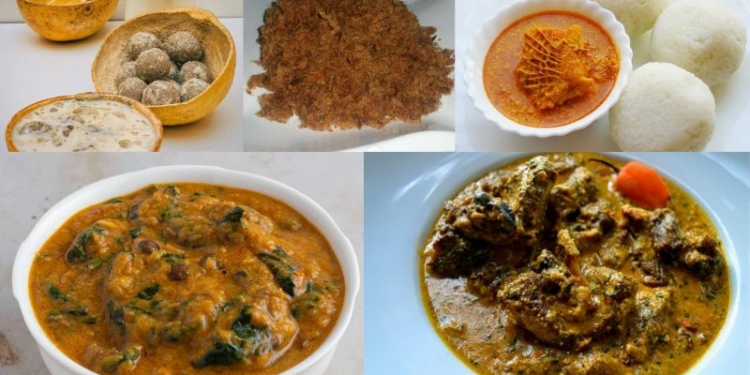
Discussion about this post